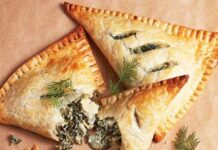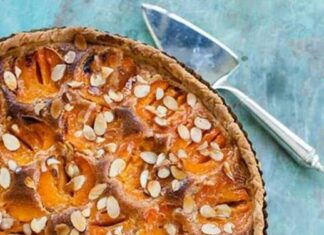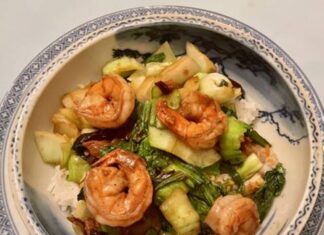Within every culture, there is always one celebrated dish that could easily represent all the rest without debate. For many Armenians and other nationalities, that dish is basterma with eggs (also spelled basturma, pastirma, bastirma, and pasterma). This recipe is courtesy of Clarice Krikorian of Fresno, California, and is featured in A Taste of Fresno Armenian and American Cuisine Cookbook from the Ladies Society of St. Paul Armenian Church in Fresno.
This seasoned, air-dried beef has been prized throughout Middle Eastern as well as Eastern European countries for centuries, and plays a major role in Armenian, Syrian, Egyptian, Bulgarian, Macedonian, Greek, and Lebanese cuisine. The first recorded mention of basterma is said to be between 95-45 BC in Armenia during the reign of Tigranes the Great. It is believed that the technology of air-drying meats was first developed to preserve basterma being traded from ancient Armenia to China and India.* Armenians believe that it dates back to when fighters relied on those highly seasoned logs of cured meat as a protein source. The war survival food evolved into an appetizer delicacy, and one of the leading highlights of the country’s culinary repertoire.
Basterma is made by salting meat (eye of round or beef tenderloin), which is then washed with water and dried for 10 to 15 days, depending on the recipe. Salt and blood is pressed out of the meat, and it is coated with chemen (chaiman, cemen), a fragrant red spice paste made with fenugreek, allspice, cayenne pepper, garlic, salt, crushed cumin, paprika, and black pepper that gives it a robust aroma and taste.
“My recipe for basterma with eggs is simple. Just fry some basterma slices in a skillet in butter, add the well-beaten eggs, salt and pepper to taste (you may want to go easy on the salt as basterma is on the salty side), cover, and wait until the eggs are set. I serve this with pita bread, cheese and fresh sliced tomatoes,” says Clarice. “The taste the basterma adds to the eggs is unforgettable. This amazing cured beef has been a part of Armenian cuisine for centuries, and is a family tradition and favorite,” she adds.
Since 2010, Clarice (a retired registered nurse) and her husband, Ben (a CPA and church organist) have made it easier for California State University, Fresno (commonly referred to as Fresno State) students who choose to follow their passion and study the arts and music. In 2010, the couple established two scholarships at the College of Arts and Humanities at Fresno State (an orchestra scholarship and a piano scholarship) which benefit music students studying those disciplines. Clarice is a member of the Arts and Humanities Advisory Board at Fresno State, the CSU Summer Arts Community Board, and also serves on the board of the Armenian Genocide Commemorative Committee of Fresno. Ben and Clarice are the parents of four grown children and have three grandchildren.
“Basterma is special. It is the most popular appetizer for our holiday celebrations and gatherings, and is a favorite of my children and grandchildren,” says Clarice.










